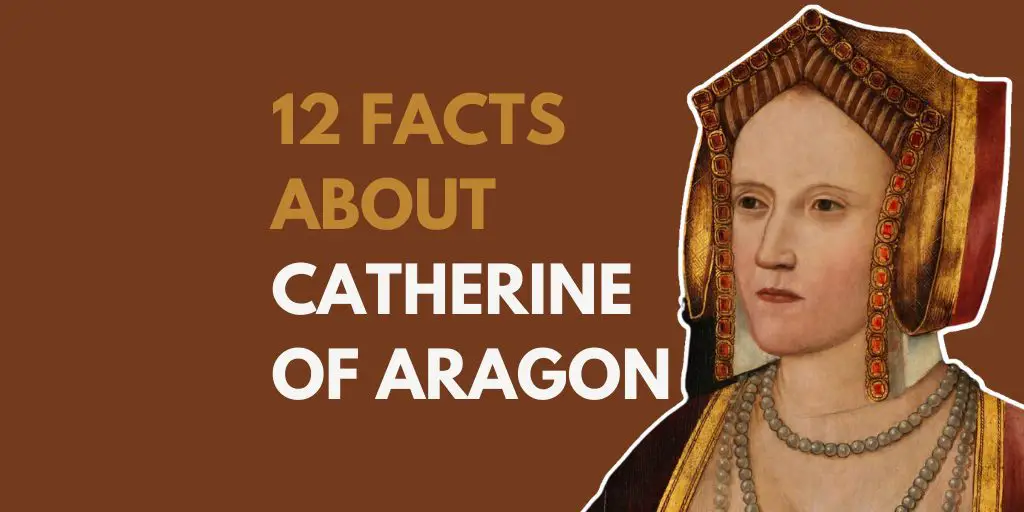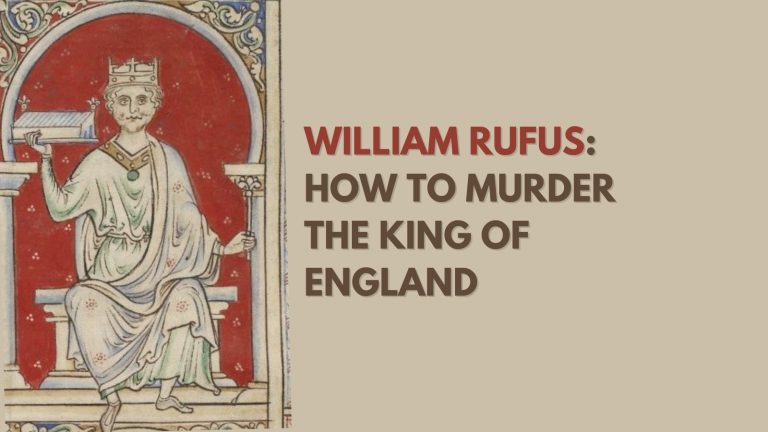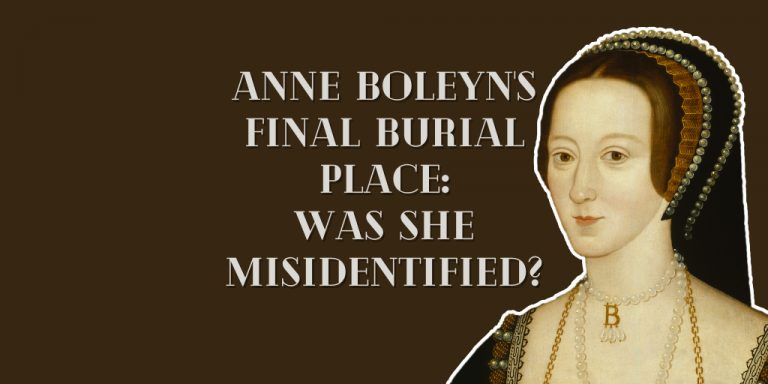12 Facts about Catherine of Aragon
Catherine of Aragon Was Henry VIII’s first wife. They married on the 11th of June 1509 until their marriage ended in divorce (annulment) on the 23rd of May 1533.
Catherine was married to Henry for over 20 years, significantly longer than all of the other wives combined.
Here are 12 fascinating facts about Henry VIII’s most adored Queen.
[/et_pb_text][/et_pb_column][/et_pb_row][et_pb_row _builder_version=”4.7.7″ _module_preset=”default”][et_pb_column type=”4_4″ _builder_version=”4.7.7″ _module_preset=”default”][et_pb_text _builder_version=”4.7.7″ _module_preset=”default”]1. Catherine of Aragon had a stronger claim to the throne of England than Henry VIII
[/et_pb_text][/et_pb_column][/et_pb_row][et_pb_row _builder_version=”4.7.7″ _module_preset=”default”][et_pb_column _builder_version=”4.7.7″ _module_preset=”default” type=”4_4″][et_pb_image src=”http://historywithhenry.com/wp-content/uploads/2021/11/1-Catherine-of-Aragon-had-a-stronger-claim-to-the-throne-of-England-than-Henry-VIII..png” _builder_version=”4.7.7″ _module_preset=”default” alt=”12 Facts about Catherine of Aragon” title_text=”1 Catherine of Aragon had a stronger claim to the throne of England than Henry VIII.” align=”center” width=”70%” hover_enabled=”0″ sticky_enabled=”0″][/et_pb_image][/et_pb_column][/et_pb_row][et_pb_row _builder_version=”4.7.7″ _module_preset=”default”][et_pb_column type=”4_4″ _builder_version=”4.7.7″ _module_preset=”default”][et_pb_text _builder_version=”4.7.7″ _module_preset=”default”]Catherine was born in the Archiepiscopal Palace of Alcala de Henares, close to Madrid, on the 16th of December 1485. She was the daughter of Ferdinand II of Aragon and Queen Isabella of Castile. These two monarchs helped forge the modern-day Spain that we all know.
In Spain, she wasn’t known as Catherine but Catalina.
Not only was she the daughter of two monarchs, but she was also a descendant of the house of Lancaster. She was the third cousin of King Henry VII.
Henry VII had his claim to the throne through the Beaufort line of the House of Lancaster. The problem with this is that initially, the Beaufort line was illegitimate. When John of Gaunt (son of Edward III) married his mistress Katherine Swynford, he legitimised the Beaufort line by royal and papal decree. But there was a caveat… the Beaufort line could never inherit the crown of England.
Technically, Catherine of Aragon’s line of descent did not go through the Beaufort line. Therefore her claim through her Lancanstrain ancestors could be argued to be stronger.
[/et_pb_text][/et_pb_column][/et_pb_row][et_pb_row _builder_version=”4.7.7″ _module_preset=”default”][et_pb_column type=”4_4″ _builder_version=”4.7.7″ _module_preset=”default”][et_pb_text _builder_version=”4.7.7″ _module_preset=”default”]2. She was married to Henry VIII’s brother Arthur Tudor
[/et_pb_text][/et_pb_column][/et_pb_row][et_pb_row _builder_version=”4.7.7″ _module_preset=”default”][et_pb_column _builder_version=”4.7.7″ _module_preset=”default” type=”4_4″][et_pb_image src=”http://historywithhenry.com/wp-content/uploads/2021/11/2-She-was-married-to-Henry-VIIIs-brother-Arthur-Tudor..jpg” _builder_version=”4.7.7″ _module_preset=”default” alt=”12 Facts about Catherine of Aragon” title_text=”2 She was married to Henry VIII’s brother Arthur Tudor.” align=”center” width=”70%” hover_enabled=”0″ sticky_enabled=”0″][/et_pb_image][/et_pb_column][/et_pb_row][et_pb_row _builder_version=”4.7.7″ _module_preset=”default”][et_pb_column type=”4_4″ _builder_version=”4.7.7″ _module_preset=”default”][et_pb_text _builder_version=”4.7.7″ _module_preset=”default”]When Catherine of Aragon first met Henry VIII, he was just 10 years of age. She was fifteen years of age and arriving in England to marry his elder brother Prince Arthur.
Henry VII had worked hard to secure this advantageous marriage for his eldest son. It helped legitimise his claim to the throne of England if such powerful monarchs as Ferdinand and Isabella would agree to allow their daughter to be married into the House of Tudor.
Catherine married Arthur Tudor at St Paul’s Cathedral on the 14th of November 1501. They then headed to Ludlow castle so that Arthur could preside over the Council of Wales and the Marches in his role as Prince of Wales.
Both became ill in March 1502, just a matter of months after their wedding. The exact nature of this illness is still in debate. However, it is quite possible that it could have been the sweating sickness that had been rampaging the country after the Battle of Bosworth.
Catherine survived the illness. Arthur did not.
Now at 16 years of age, Catherine of Aragon was a widow.
Over 20 years later, Henry VIII argued that his own marriage to Catherine was invalid because of this prior marriage. The King’s argument was that in the book of Leviticus, it is said that a man should not marry his brother’s widow. The King completely ignored that a papal dispensation had been granted to allow the marriage between Catherine and Henry to go ahead.
[/et_pb_text][/et_pb_column][/et_pb_row][et_pb_row _builder_version=”4.7.7″ _module_preset=”default”][et_pb_column type=”4_4″ _builder_version=”4.7.7″ _module_preset=”default”][et_pb_text _builder_version=”4.7.7″ _module_preset=”default”]3. Catherine of Aragon had red hair
[/et_pb_text][/et_pb_column][/et_pb_row][et_pb_row _builder_version=”4.7.7″ _module_preset=”default”][et_pb_column _builder_version=”4.7.7″ _module_preset=”default” type=”4_4″][et_pb_image src=”http://historywithhenry.com/wp-content/uploads/2021/11/3-Catherine-of-Aragon-had-red-hair..jpg” _builder_version=”4.7.7″ _module_preset=”default” alt=”12 Facts about Catherine of Aragon” title_text=”3 Catherine of Aragon had red hair.” align=”center” width=”70%” hover_enabled=”0″ sticky_enabled=”0″][/et_pb_image][/et_pb_column][/et_pb_row][et_pb_row _builder_version=”4.7.7″ _module_preset=”default”][et_pb_column type=”4_4″ _builder_version=”4.7.7″ _module_preset=”default”][et_pb_text _builder_version=”4.7.7″ _module_preset=”default” hover_enabled=”0″ sticky_enabled=”0″]In many modern depictions of Catherine of Aragon, such as films and TV shows, she is shown as having dark hair.
This wasn’t the case. The early portraits of Catherine show that she had light red hair, what we might call a strawberry blonde.
She fitted perfectly into the redheads of the Tudor era.
Catherine was considered a great beauty of the day, and few at court could match her intelligence and education.
Thomas More wrote about her,
“She it is who could vanquish the ancient Sabine women
in devotion, and indignity the holy, half-divine
heroines of Greece.
She could equal the unselfish love of Alcestis or, in her
unfailing judgment, outdo Tanaquil.
In her expression, in her countenance, there is a remark-
able beauty uniquely appropriate for one so great and
good.
The well-spoken Cornelia would yield to her in elo-
quence; she is like Penelope in loyalty to a husband.”
4. Catherine was present at the Battle of Granada
[/et_pb_text][/et_pb_column][/et_pb_row][et_pb_row _builder_version=”4.7.7″ _module_preset=”default”][et_pb_column _builder_version=”4.7.7″ _module_preset=”default” type=”4_4″][et_pb_image src=”http://historywithhenry.com/wp-content/uploads/2021/11/4-Catherine-was-present-at-the-Battle-of-Granada..jpg” _builder_version=”4.7.7″ _module_preset=”default” alt=”12 Facts about Catherine of Aragon” title_text=”4 Catherine was present at the Battle of Granada.” align=”center” width=”70%” hover_enabled=”0″ sticky_enabled=”0″][/et_pb_image][/et_pb_column][/et_pb_row][et_pb_row _builder_version=”4.7.7″ _module_preset=”default”][et_pb_column type=”4_4″ _builder_version=”4.7.7″ _module_preset=”default”][et_pb_text _builder_version=”4.7.7″ _module_preset=”default”]Catherine grew inspiration on how a woman could lead from her mother, Queen Isabella. Isabella wasn’t just Queen because she was married to Ferdinand of Aragon; she was Queen of Castile in her own right.
At the Battle of Granada, the young Catherine watched her mother ride up and down the Spanish lines dressed in a breastplate of armour, giving words of inspiration to the troops. These early influences shaped her character for the years ahead.
[/et_pb_text][/et_pb_column][/et_pb_row][et_pb_row _builder_version=”4.7.7″ _module_preset=”default”][et_pb_column type=”4_4″ _builder_version=”4.7.7″ _module_preset=”default”][et_pb_text _builder_version=”4.7.7″ _module_preset=”default”]5. Catherine of Aragon was the Spanish ambassador
[/et_pb_text][/et_pb_column][/et_pb_row][et_pb_row _builder_version=”4.7.7″ _module_preset=”default”][et_pb_column _builder_version=”4.7.7″ _module_preset=”default” type=”4_4″][et_pb_image src=”http://historywithhenry.com/wp-content/uploads/2021/11/5-Catherine-of-Aragon-was-the-Spanish-ambassador..jpg” _builder_version=”4.7.7″ _module_preset=”default” title_text=”5 Catherine of Aragon was the Spanish ambassador.” align=”center” width=”70%” hover_enabled=”0″ sticky_enabled=”0″][/et_pb_image][/et_pb_column][/et_pb_row][et_pb_row _builder_version=”4.7.7″ _module_preset=”default”][et_pb_column type=”4_4″ _builder_version=”4.7.7″ _module_preset=”default”][et_pb_text _builder_version=”4.7.7″ _module_preset=”default”]After the death of Prince Arthur, Catherine was in a difficult situation. Henry VII kept her desperately short of money while negotiations regarding a potential marriage to young Prince Henry took place. Further complications arose when Catherine’s mother, Isabella of Castile, died. It meant that Catherine’s prestige in the marketplace had decreased.
Henry VII even considered putting Catherine on a ship home to Spain, so he would not have to pay for her upkeep.
Her father appointed her Spanish ambassador to England in 1507 as a way to mitigate her difficult circumstances. With Catherine being very intelligent, it was an inspired appointment. When the appointment took place, Catherine became the first female ambassador in European history.
[/et_pb_text][/et_pb_column][/et_pb_row][et_pb_row _builder_version=”4.7.7″ _module_preset=”default”][et_pb_column type=”4_4″ _builder_version=”4.7.7″ _module_preset=”default”][et_pb_text _builder_version=”4.7.7″ _module_preset=”default”]6. Catherine of Aragon was Regent of England
[/et_pb_text][/et_pb_column][/et_pb_row][et_pb_row _builder_version=”4.7.7″ _module_preset=”default”][et_pb_column _builder_version=”4.7.7″ _module_preset=”default” type=”4_4″][et_pb_image src=”http://historywithhenry.com/wp-content/uploads/2021/11/6-Catherine-of-Aragon-was-Regent-of-England..jpg” _builder_version=”4.7.7″ _module_preset=”default” alt=”12 Facts about Catherine of Aragon” title_text=”6 Catherine of Aragon was Regent of England.” align=”center” width=”70%” hover_enabled=”0″ sticky_enabled=”0″][/et_pb_image][/et_pb_column][/et_pb_row][et_pb_row _builder_version=”4.7.7″ _module_preset=”default”][et_pb_column type=”4_4″ _builder_version=”4.7.7″ _module_preset=”default”][et_pb_text _builder_version=”4.7.7″ _module_preset=”default”]On the 11th of June 1533, Henry VIII appointed Catherine Regent of England.
He was sailing to France on a military campaign. She was given the titles, Governor of the Realm and Captain-General. Effectively, she held all the powers of the King in his absence from the country.
This was a significant step. Never before and the King of England appointed his Queen Regent in his absence. Usually, the position went to a trusted noble or counsellor.
It shows both the trust Henry had in his wife’s abilities to lead and govern and, interestingly, Henry’s unusual acceptance that women could fulfill these roles.
[/et_pb_text][/et_pb_column][/et_pb_row][et_pb_row _builder_version=”4.7.7″ _module_preset=”default”][et_pb_column type=”4_4″ _builder_version=”4.7.7″ _module_preset=”default”][et_pb_text _builder_version=”4.7.7″ _module_preset=”default”]7. Catherine defeated the Scots at the Battle of Flodden
[/et_pb_text][/et_pb_column][/et_pb_row][et_pb_row _builder_version=”4.7.7″ _module_preset=”default”][et_pb_column _builder_version=”4.7.7″ _module_preset=”default” type=”4_4″][et_pb_image src=”http://historywithhenry.com/wp-content/uploads/2021/11/7-Catherine-defeated-the-Scots-at-the-Battle-of-Flodden..jpg” _builder_version=”4.7.7″ _module_preset=”default” alt=”12 Facts about Catherine of Aragon” title_text=”7 Catherine defeated the Scots at the Battle of Flodden.” align=”center” width=”70%” hover_enabled=”0″ sticky_enabled=”0″][/et_pb_image][/et_pb_column][/et_pb_row][et_pb_row _builder_version=”4.7.7″ _module_preset=”default”][et_pb_column type=”4_4″ _builder_version=”4.7.7″ _module_preset=”default”][et_pb_text _builder_version=”4.7.7″ _module_preset=”default”]Catherine’s principal task as Regent of England turned out to be the defence of the country.
When Henry VIII invaded France, Scotland honoured the auld alliance. However, they gave the English 30 days written notice of their intention to invade. (Yes, unbelievable, isn’t it?)
This was all the time that Catherine needed.
She ordered an army to be raised, worked with a certain Thomas Wolsey to ensure that supply lines were entirely in place, and, together with her ladies, sewed banners, standards, and flags.
She rode north from London to address the troops, obviously gaining inspiration from her mother’s actions all those years beforehand.
She was at Woburn Abbey when news of the victory at the Battle of Flodden field reached her. It was the biggest ever invasion of Scots into England. Possibly 30,000 men made up the Scottish army.
However, the result was a decisive English victory. Upwards of 10,000 Scots were killed, including the King of Scots himself, James IV.
When Catherine first heard of the victory, she suggested sending the body of the Scottish King over to Henry in France as a gift. Instead, after a little bit of gentle persuasion, she simply sent a piece of the Scottish King’s bloodied coat that Henry might use on his own banners.
[/et_pb_text][/et_pb_column][/et_pb_row][et_pb_row _builder_version=”4.7.7″ _module_preset=”default”][et_pb_column type=”4_4″ _builder_version=”4.7.7″ _module_preset=”default”][et_pb_text _builder_version=”4.7.7″ _module_preset=”default”]8. The pomegranate was her emblem
[/et_pb_text][/et_pb_column][/et_pb_row][et_pb_row _builder_version=”4.7.7″ _module_preset=”default”][et_pb_column _builder_version=”4.7.7″ _module_preset=”default” type=”4_4″][et_pb_image src=”http://historywithhenry.com/wp-content/uploads/2021/11/8-Catherine-of-Aragons-emblem-was-the-pomegranate..jpg” _builder_version=”4.7.7″ _module_preset=”default” alt=”12 Facts about Catherine of Aragon” title_text=”8 Catherine of Aragon’s emblem was the pomegranate.” align=”center” width=”70%” hover_enabled=”0″ sticky_enabled=”0″][/et_pb_image][/et_pb_column][/et_pb_row][et_pb_row _builder_version=”4.7.7″ _module_preset=”default”][et_pb_column type=”4_4″ _builder_version=”4.7.7″ _module_preset=”default”][et_pb_text _builder_version=”4.7.7″ _module_preset=”default”]Catherine of Aragon’s personal emblem was the pomegranate. It was often seen carved into the royal palaces, on paintings, and on clothing. More often than not, the pomegranate was crowned to indicate Catherine’s royal status.
The pomegranate was meant to symbolise fertility. It was also one of the symbols of her home country.
During the “king’s great matter”, when Henry was looking to get rid of her, the Royal Court split into two factions. On one side were the supporters of the Queen, Catherine of Aragon, and on the other with the supporters of Anne Boleyn.
Graffiti would often appear on the palace walls depicting a falcon eating a pomegranate. The falcon was the personal symbol of Anne Boleyn. Anybody at the Royal Court would simply take one glance at the graffiti and understand the meaning.
[/et_pb_text][/et_pb_column][/et_pb_row][et_pb_row _builder_version=”4.7.7″ _module_preset=”default”][et_pb_column type=”4_4″ _builder_version=”4.7.7″ _module_preset=”default”][et_pb_text _builder_version=”4.7.7″ _module_preset=”default”]9. Catherine of Aragon was pregnant at least six times
[/et_pb_text][/et_pb_column][/et_pb_row][et_pb_row _builder_version=”4.7.7″ _module_preset=”default”][et_pb_column _builder_version=”4.7.7″ _module_preset=”default” type=”4_4″][et_pb_image src=”http://historywithhenry.com/wp-content/uploads/2021/11/9-Catherine-of-Aragon-was-pregnant-at-least-six-times..jpg” _builder_version=”4.7.7″ _module_preset=”default” alt=”12 Facts about Catherine of Aragon” title_text=”9 Catherine of Aragon was pregnant at least six times.” align=”center” width=”70%” hover_enabled=”0″ sticky_enabled=”0″][/et_pb_image][/et_pb_column][/et_pb_row][et_pb_row _builder_version=”4.7.7″ _module_preset=”default”][et_pb_column type=”4_4″ _builder_version=”4.7.7″ _module_preset=”default”][et_pb_text _builder_version=”4.7.7″ _module_preset=”default”]Catherine famously only had one child that lived to adulthood, the future Queen Mary [famously remembered to history as bloody Mary.]
However, Catherine of Aragon was actually pregnant at least six times.
She gave birth to a Prince, Henry’s first male heir. Prince Henry, Duke of Cornwall, was born on new year’s day 1511. However, he died suddenly just two months after his birth.
The remaining four pregnancies all resulted in stillbirths. In addition to the pregnancies, we’re aware of, there were probably additional miscarriages in the early stages of pregnancy.
[/et_pb_text][/et_pb_column][/et_pb_row][et_pb_row _builder_version=”4.7.7″ _module_preset=”default”][et_pb_column type=”4_4″ _builder_version=”4.7.7″ _module_preset=”default”][et_pb_text _builder_version=”4.7.7″ _module_preset=”default”]10. She insisted on being called Queen after her divorce
[/et_pb_text][/et_pb_column][/et_pb_row][et_pb_row _builder_version=”4.7.7″ _module_preset=”default”][et_pb_column _builder_version=”4.7.7″ _module_preset=”default” type=”4_4″][et_pb_image src=”http://historywithhenry.com/wp-content/uploads/2021/11/10-Catherine-of-Aragon-insisted-on-being-called-Queen-after-her-divorce..jpg” _builder_version=”4.7.7″ _module_preset=”default” alt=”12 Facts about Catherine of Aragon” title_text=”10 Catherine of Aragon insisted on being called Queen after her divorce.” align=”center” width=”70%” hover_enabled=”0″ sticky_enabled=”0″][/et_pb_image][/et_pb_column][/et_pb_row][et_pb_row _builder_version=”4.7.7″ _module_preset=”default”][et_pb_column type=”4_4″ _builder_version=”4.7.7″ _module_preset=”default”][et_pb_text _builder_version=”4.7.7″ _module_preset=”default”]Technically the marriage between Catherine of Aragon and Henry VIII was ended via an annulment, not a divorce. This meant that legally the marriage had never ever happened.
Catherine refused to acknowledge the annulment.
She still believed herself to be the true wife of the King and, therefore, the true Queen of England.
Whenever she wrote a letter, she would still sign herself Catherine the Queen. There would typically be a standoff whenever Henry sent delegations to speak with her after her banishment from court. Catherine would refuse to talk to anybody who refused to call her Queen.
She also refused to call her daughter Mary by any other title than Princess. After the annulment, Henry decreed that Mary was, in fact, illegitimate because his marriage to Catherine had never legally taken place. Therefore she was referred to as the Lady Mary.
Taking her lead from her mother, Mary refused to acknowledge anybody who didn’t address her as Princess.
[/et_pb_text][/et_pb_column][/et_pb_row][et_pb_row _builder_version=”4.7.7″ _module_preset=”default”][et_pb_column type=”4_4″ _builder_version=”4.7.7″ _module_preset=”default”][et_pb_text _builder_version=”4.7.7″ _module_preset=”default”]11. Henry’s later wives were named after her
[/et_pb_text][/et_pb_column][/et_pb_row][et_pb_row _builder_version=”4.7.7″ _module_preset=”default”][et_pb_column _builder_version=”4.7.7″ _module_preset=”default” type=”4_4″][et_pb_image src=”http://historywithhenry.com/wp-content/uploads/2021/11/11-Henry-VIIIs-later-wives-were-named-after.jpg” _builder_version=”4.7.7″ _module_preset=”default” alt=”12 Facts about Catherine of Aragon” title_text=”11 Henry VIII’s later wives were named after” align=”center” width=”70%” hover_enabled=”0″ sticky_enabled=”0″][/et_pb_image][/et_pb_column][/et_pb_row][et_pb_row _builder_version=”4.7.7″ _module_preset=”default”][et_pb_column type=”4_4″ _builder_version=”4.7.7″ _module_preset=”default”][et_pb_text _builder_version=”4.7.7″ _module_preset=”default”]Catherine Howard and Catherine Parr what both almost certainly named after Catherine of Aragon. It was the standard practice amongst the noble families in Tudor England to name their children after the King and Queen.
It is often forgotten that Henry VIII was married to Catherine of Aragon for over 20 years. She wasn’t just one of six wives. She was married to the King longer than the other five wives combined.
Catherine of Aragon had been married to Henry for so long, by the time he came to marry his later wives, a large proportion of eligible women were called Catherine.
[/et_pb_text][/et_pb_column][/et_pb_row][et_pb_row _builder_version=”4.7.7″ _module_preset=”default”][et_pb_column type=”4_4″ _builder_version=”4.7.7″ _module_preset=”default”][et_pb_text _builder_version=”4.7.7″ _module_preset=”default”]12. Catherine’s funeral and a strange coincidence
[/et_pb_text][/et_pb_column][/et_pb_row][et_pb_row _builder_version=”4.7.7″ _module_preset=”default”][et_pb_column _builder_version=”4.7.7″ _module_preset=”default” type=”4_4″][et_pb_image src=”http://historywithhenry.com/wp-content/uploads/2021/11/12-Catherine-of-Aragons-funeral-and-a-strange-coincidence..png” _builder_version=”4.7.7″ _module_preset=”default” alt=”12 Facts about Catherine of Aragon” title_text=”12 Catherine of Aragon’s funeral and a strange coincidence.” align=”center” width=”70%” hover_enabled=”0″ sticky_enabled=”0″][/et_pb_image][/et_pb_column][/et_pb_row][et_pb_row _builder_version=”4.7.7″ _module_preset=”default”][et_pb_column type=”4_4″ _builder_version=”4.7.7″ _module_preset=”default”][et_pb_text _builder_version=”4.7.7″ _module_preset=”default”]Catherine of Aragon was buried in Peterborough Abbey, Peterborough Cathedral, as it is now following the dissolution.
On hearing the news of her death Henry and his new Queen, Anne Boleyn, celebrated by dressing up in yellow clothing. Anne always felt threatened by her predecessor, believing that while Catherine’ lived, the country would never accept her as the Queen.
There was a certain degree of truth to this. Catherine of Aragon was adored by the English public stop Anne Boleyn was generally despised.
On the 29th of January 1536, Catherine’s funeral took place not with the full rights usually given to an English Queen but with those of Dowager Princess of Wales. Her own daughter wasn’t even allowed to attend because she refused to acknowledge that her parent’s marriage was invalid.
On the same day, the woman who celebrated her death, Anne Boleyn, miscarried a male child. Many said it was karma at work.
[/et_pb_text][/et_pb_column][/et_pb_row][/et_pb_section]





